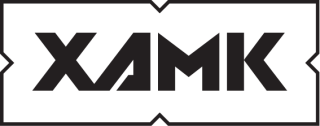
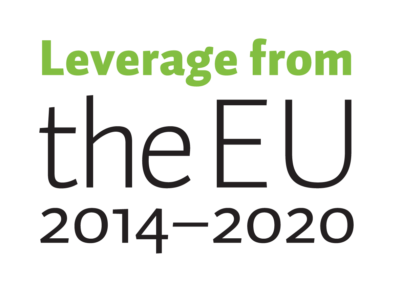


Carve
Circadian Activity Revitalizing Vocational Energy
Job crafting by taking into account the individual chronotypes and energy levels of the employees is a key to better well-being at work.
The project is finished.
Job crafting is a self-directed and voluntary modification of work so that the work meets the needs, strengths and values of the employee. You can do it by editing the content of the work, your social relationships or your own thinking. In addition, when an employee is aware of his or her own chronotype and recognizes the variations in his or her own alertness, they can take them into account when planning their own work tasks and crafting their work.
In doing so, the employee takes an active role in maintaining his or her well-being at work. Studies show that as an employee actively develops his or her own work, their motivation increases, performance improves, and the risk of burnout decreases, which is also reflected positively in the work community and in the company’s productivity.
Carve project
Often, general guidelines are given for job crafting, which tend to take working efficiency into account, but do not regard maintaining the employee’s optimal energy level during the day. It can be difficult for an employee to know when a task should be done or what would be the most optimal work process for themselves. The project aimed to find a solution to this problem by helping employees to craft their work by taking into account their personal chronotypes and fluctuations in energy levels during the day.
Objectives
The aim of the project was to promote well-being at work in a comprehensive way at the individual and organizational levels, and thereby to improve work productivity, especially for employees doing shift work and mentally demanding work. The project developed ways for job crafting based on the individual chronotypes of employees. Personal information provided by surveys and wellness technology was also used to identify circadian rhythms and energy levels. The aim was to promote the quality of working life and work productivity by, for example, making work processes, schedules and tasks more suitable individually.
The project was implemented in South-Eastern Finland University of Applied Sciences at Active Life Lab research unit. The project also involved international cooperation with the Belgian KU University of Leuven and the Bulgarian Idein Ltd. Research Center (CARVE – Circadian Activity Revitalizing Vocational Energy).
Here is an article about the international cooperation in the CARVE project: Why and how to take energy levels into account at work – Results from the international CARVE project
Here is the website that has been made in the international CARVE cooperation: https://actauni.com/en/
Measures
In the project, an organization or team participated in a development process that lasted about six months:
- Initial survey on well-being at work, chronotype and quality of working life, five-day energy level survey and Moodmetric smart ring or Firstbeat well-being analysis.
- Personal feedback discussions with job crafting tips based on the measurement results.
- CARVE Workshops to provide general information on the topics of the project and to review the results and recommendations of the work community for job crafting.
- Common webinars and workshops on emerging topics (e.g. recovery, sleep, regulation of energy levels, time management)
- Final measurements repeating the surveys and well-being technology measurements.
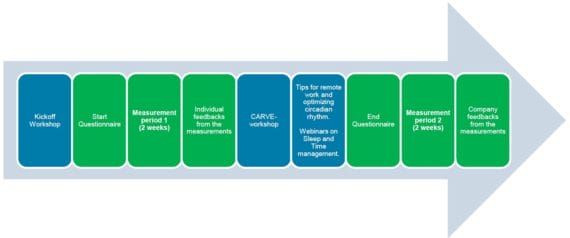
The Quality of Working Life -index (QWL) was included to the initial and final surveys of the project, which makes it possible to observe the possible changes in the quality of working life and work productivity on a company-specific basis.
Outcomes
As a result of the project, both organizations and employees received illustrative information about their well-being and learned to utilize personal chronotypes, energy levels, and job crafting to improve well-being at work. Identifying problem areas enables companies to develop a needs-based occupational well-being strategy that takes into account the needs of individual employees.
The project has promoted Job crafting and Quality of Working Life in South-Eastern Finland:
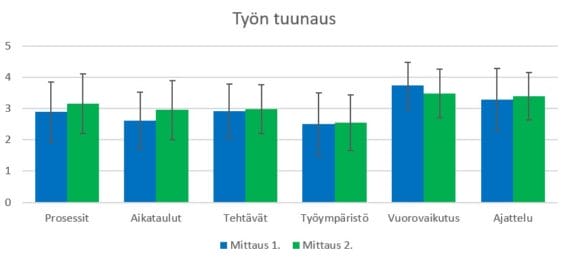
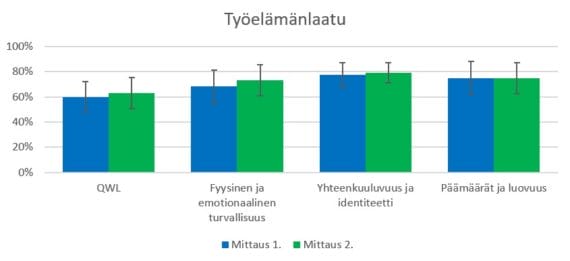
The results show that the most positive effects have been achieved by office workers:
Office work

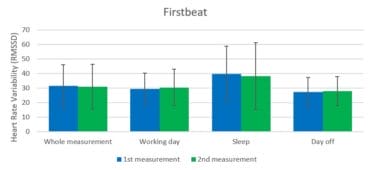
Shift work

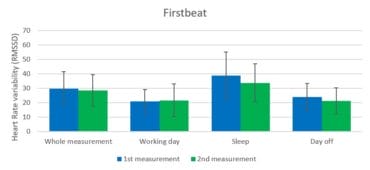
Based on all the measurements made, living by one’s own circadian rhythm was positively related to the state of alertness, mood and performance at work, as well as to the overall quality of working life:

Test your chronotype with Morningness-Eveningness Questionnaire!
CARVE – Circadian Activity Revitalizing Vocational Energy
Info
Budget
More information
Tanja Mäkelä
Project manager
040 183 2178
firstname.lastname@xamk.fi
Marko Tanskanen
RDI-Specialist
040 645 9207
firstname.lastname@xamk.fi
